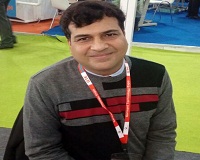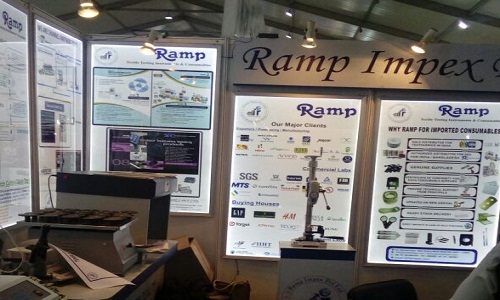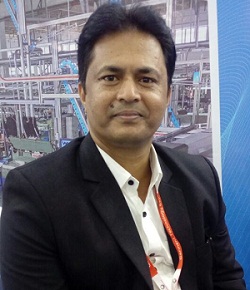FW
Environmental not-for-profit Canopy announced 20 new brands are now committed to eliminate the use of endangered forests in their textile supply chain by 2020. With the addition of companies zLabels, MQ Retail, Koala, TAMGA Designs and Spell & The Gypsy Collective, the CanopyStyle initiative has now crossed 125 brand partners representing over $134B in annual revenue.
This initiative will be working for the long-lasting transformation of the rayon-viscose supply chain to protect these ecologically-rich forests. CanopyStyle partners are also prioritizing the development of next generation solutions such as alternative fibres and circular economy sourcing.
All partner brands have committed to eliminate use of ancient and endangered forests. Looking at just one example, Vancouver Island is ground zero for many of the last remaining stands of thousand year old cedars, ancient Douglas Fir and spruce which store vast amounts of carbon and support biodiversit.
Lizzy Abegg, Co-Founder & Chief Brand Officer of Spell & The Gypsy Collective said, they are committed to not source from the world’s ancient and endangered forests, and to encourage our suppliers to shift to more innovative recycled fibres.
Nicole Rycroft, Founder and Executive Director at Canopy was happy with the growing consensus, the addition of 20 brands and designers from three continents is a clear signal of CanopyStyle’s continued and strengthening momentum around the world. The transformation of the viscose supply chain is going to be a game changer for our climate, for the lasting protection of forests and for the advancement of traditional communities’ rights.
Canopy and its brand, retail and design partners have catalysed significant transformation of the viscose supply chain. Through work with producers and other industry stakeholders, 25 per cent of the global viscose supply has now been verified at low risk of originating from ancient and endangered forests. An additional 35 per cent of rayon supply is currently in the CanopyStyle Audit process and six next generation solution enterprises are working with Canopy to bring their innovative technologies to market at scale.
H&M is entering strong competition in the off-price UK market in an attempt to steal market share from existing players using its new discount retail platform, Afound. Afound which stocks both H&M group’s own and third-party brands is expected to launch online and in stores in Sweden this year in advance of an international launch.
The UK is expected to be next on the drawing board. Drapers is of the view that H&M is looking at having an agreement with several young fashion women’s and men’s wear UK brands. Operating profit for H&M group dropped 13 per cent to SEK20.6bn (£1.85bn) in the year to 30 November, while sales including VAT fell by 4 per cent to SEK232bn (£20.8bn).
Charlotte Pearce, associate analyst at GlobalData Retail, said, “Considering H&M’s recent results, Afound seems like it could be a further distraction to its core business. With H&M’s online platform falling short of the likes of online pureplays Asos and Boohoo, the retailer will need to work hard to bring Afound up to industry standards. TK Maxx has firmly established itself in the UK as an off-price retailer and is synonymous with designer brands, but Afound’s positioning is still unclear.
Rob Feldmann, chief executive at off-price e-tailer BrandAlley, was of the view that Afound’s launch should not pose a threat to bricks-and-mortar outlets. Afound will need strong brands, if they’re working with low selling prices initially, it will be hard to make the economics work. But if they can get a selection of good, more expensive brands to work alongside them, it could work.
Première Vision has once again been chosen by Archroma to present its developments combining creativity, technology, and sustainable approach. Color Atlas, Archroma's innovative colour system dedicated to designers, brands, retailers and the entire industry is the ideal tool to bring fashion inspiration to life, while enhancing functionality in all stages of the process.
The attendees of MintModa's trend presentations will receive a limited-edition MintModa x Archroma SS19 color card. Archroma, a global leader in colour and specialty chemicals, will showcase the latest in its advanced colour-management solutions at Première Vision Paris, Hall 6 Booth 6U2. The Colour Atlas system will also be featured in MintModa’s SS19 seasonal inspirations, presented on February 14.
Color Atlas is a game-changer for fashion design. Color Atlas by Archroma®, has around 4,320 hues and colour swatches, truly gives shape to any imagination. This is Archroma Color Management’s ground breaking platform specially devised to address the needs of designers, brands, retailers, and manufacturers, enhancing creative possibilities for the industry as well as manageability and time to market through key complementary tools: The Color Atlas Library is the six-volume physical reference to the 4,320 colour swatches and cotton poplin samples, secured yet easily removable and absolutely intuitive to be browsed thanks to the accordion-fold design of the catalogues.
A compact edition of the Color Atlas is also available, including the very same colour variety while being slimmed down from six to two volumes for increased portability. Color Atlas Online is the mobile-friendly designer’s companion to find the perfect colour matching while on-the-go or in the office. Through this feature, it’s possible to capture an inspiring image using a smartphone and immediately identify the closest Color Atlas shade palette, with the possibility to purchase a colour sample instantly.
A new patent-pending technology powered by NFC, exclusively introduced by Archroma, also adds swatch-specific information to each Engineered Colour Standard, giving retailers, brands, and mills instant access to dye recipes and more colour information than ever. The online system also allows to create personal special collections of colours or products that can also be shared, both internally and with suppliers.
Archroma, a global leader in colour and specialty chemicals, says it has signed a MoU with the World Wide Fund for Nature (WWF, Pakistan). The MoU paves the way for formal cooperation between the two institutions in Pakistan, leading to projects mainly related to water conservation in the textile industry there.
The MoU will build strong ties between Archroma and WWF Pakistan’s initiatives in promoting sustainable practices within the textile industry using Archroma’s technical expertise toward zero liquid discharge, software simulations in production lines and the Archroma ONE WAY Process Simulator tool, together with research methodologies in reducing water consumption and re-using water. Both institutions will jointly strive to raise awareness amongst the textile sector through training programs by introducing new process models with a futuristic approach
Mujtaba Rahim, CEO, Archroma Pakistan says Archroma they strongly believe water conservation is the key to the sustainability of our industry. “We believe in continuous improvement, and through this important initiative, we are confident to improve upon the depleting water reserves, especially in Sindh. Water conservation by recycling and reuse will definitely save fresh-water reservoirs. The technical expertise of our team and enthusiasm of WWF Pakistan in conserving natural resources is an ideal partnership and we look forward to working on many projects in the future,” he added.
Studio Next the firm that deals with technology for cutting of garments showcased at the recent GTE held in New Delhi. Explaining his business and its relation with GTE Vishal Sher, MD, Studio Next says. “A garmenting fair has three major divisions: Cutting, sewing and finishing. We are into cutting automation which has a CAD system from Richpeace. We have a fully automatic spreader and cutting machines from Japan. We also have semi-automated cutting machines and spreader that provides cost effective solutions to the garment industry. We are manufacturers of semi-automated machines where the CAD system is from Richpeace.”
Happy with the number footfall at GTE, Sher says the key advantage of being in an expo like this is one gets a chance to showcase their products and technology to the industry as a whole and explain its cost effectiveness directly. “In the last 15 years, we have emerged as a leading player in this segment, supplying CAD/CAM solutions with a market share of 60 to 65 per cent in India.”
Sher goes on to explain CAD is like Tally, even a small manufacturer can use it. Studio Next sells around 15 CADs a month. Not troubled by competition, Sher says India is a big market and there is space for every player, “Besides, we have proved ourselves in the market. As an industry, we have reached a stage where China was seven eight years back. So things are improving. Online business is helping the industry grow and we see demand doubling in coming years.” He concludes.
As for their expansion plans, “We are focusing on domestic and international markets both. Domestic market is growing fast, small players are ready to accept technologies.”

Ramp Impex was incepted in 2005. It’s into testing instruments and serves many verticals. Textile has been Ramp Impex’s forte. “We have currently 17 partners worldwide including China, US, Europe, Taiwan and Japan. The company has a mix of Indian and imported portfolio which cannot be matched by any other company in the country,” says Puneet Rawal, Managing Director.

Rawal says they service customers as per their budget. The company has been diversifying and upgrading quality parameters, besides being a part of the global network, they are always updated in advance on the standards and protocols followed internationally. “The Indian market is small but promising. People now understand the importance of quality as it also contributes to productivity. Quality is an important parameter that enables one to sustain in the market. People also understand how easy it is to lose customers on the basis of quality issues. It adds to the cost factors, since margins have minimised and manufactures cannot afford any rejection in their products.”
On India as a garmenting hub Rawal feels we have enough skilled manpower. As far as testing is concerned, India is a hub for South Asia. But we are way behind China, the US and Europe in testing standards. “Adaptability to quality standards is still low. People still have a mind-set that testing and laboratory machines are a liability rather than an asset. Indians look more at investing in production, but the trend is changing considering the seriousness with which Europeans and other developed countries follow quality norms.”He says large industry houses are growing largely because they take testing solutions seriously. Today’s buyer is smart and any deviation from quality norms may lead to a company sinking without a trace.
However, awareness about quality products is gradually increasing. People are becoming brand conscious. It is because brands ensure quality and that is what the end consumer is looking for. Brands push apparel manufacturers and this is how the entire cycle in the garmenting sector is running.
Rawal says “The domestic market is huge. Change in perception is making Indian manufacturers push themselves to match global standards. However, on the export front, we are struggling. Countries like China, Vietnam and Cambodia are doing well. We need a lot of governmental support to grow exports.”
Ramp Impex has a tie up with 13 global brands. They have set up a new unit in Bawana Industrial area under the Make In India initiative. “As a company, we have grown and understood the technological aspects of our segment of operations which are at par with global players. We are also available in South Asia. We have been the first to put up a testing lab in Dubai,” he observes.
HCA is a 108-year-old company with expertise in sewing related issues in the garmenting sector. “We do spare parts, finishing and stitching. Currently, we have a tie up with 16 international companies. Business was growing steadily till GST was introduced. This caused a little disruption in operation, now all is back on track. We are hopeful post March things would improve further,” says Megha Anand Dudhoria, Director (Sales and Marketing).
Dudhoria says availability of skilled labour is an issue in India. Besides Indian laws are completely in favour of employees, further their work is also not productive. “It’s a Catch 22 situation. Infrastructure is another major issue that the Indian garmenting industry is facing. Duty drawback to exporters is an area where the government needs to get its act together,” opines Dudhoria.
HCA does a little production in India. “It is automation that does all the work. The market is changing, people are shifting to server motors, and looking for more productivity and also becoming more quality conscious.” Dudhoria is euphoric about GTE, “It is phenomenal as it has always been. We are happy to be here. The platform is helpful for buyers and sellers. Looking forward to more productive results post GTE.”

INL offers systems as Mohammed Nooruddin, Regional Manager says “Anything that has to do with fabrics. We have a computerised hanger systems, transportation and storage systems, as well as tracking systems. Our systems ensures efficiency in production. It is actually the streamlining of operations within the production unit which results in saving cost and time. We are based in Singapore, however, since 2003 we are present in the Indian market.”
Nooruddin believes GTE is a platform with a lot of possibilities for business point. “Since a long time we have been participating in fairs all across the world and have seen GTE is about responsive customers and feedback. These are two key aspects of GTE. The third is, reach the expo has given us a wide reach in terms of new clients and territories. Footfall are constantly increasing and this brings in quality customers every year.”
He feels the Indian market has not been explored well. The country holds a huge potential in the textile and garmenting sector. The huge population is an asset for garmenting sector. “We see countries like Bangladesh and Ethiopia doing extremely well in garmenting, though they lack in resources. So it depends on strategy. Technology can play a big role if adopted well,” he opines.
As for future plans, INL is targeting pan India spread. “I am positive about the country, as far as garmenting is concerned. We are available in all countries that manufacture garments. We are present in neighbouring countries but have a decently strong base in the Northern and Eastern India.”
Hong Kong Trade Development Council (HKTDC), the international marketing arm for Hong Kong-based manufacturers, traders and service providers, released the results of its annual Centrestage Survey recently.
The Council’s report said that the women’s wear segment will continue to dominate the global fashion market in 2018.
HKTDC survey covered more than 200 buyers and 70+ exhibitors from Hong Kong, the Chinese mainland and other regions. The aim of the survey was to get an overview of the current market prospects, new product trends and the latest e-tailing developments.
In the survey, women’s wear attracted the highest level of ‘likes’ from both buyers and exhibitors (66 per cent and 82 per cent), casual wear garnered second place (23 per cent and 3 per cent).
If one looks at markets, Hong Kong has the greatest 2018 growth potential as noted by around 90 per cent of the respondents in their traditional markets followed by South Korea and Taiwan, the report stated.
The fashion brand-promotion survey noted a positive sales performance in 2018. 75 per cent of respondents held the view that Mainland China would emerge as the most promising emerging market in 2018 followed by Eastern Europe (43 per cent), followed by the ASEAN countries (43 per cent).
58 per cent of buyers saw no change in the retail price of their products in 2018, while 39 per cent hope for an increase in retail price. In terms of FOB selling price, 70 per cent of exhibitors said they expect to see a status quo in 2018, while 17 per cent of respondents predicted an increase. 13 per cent expect to see a decrease in the overall FOB selling price.
Discussing sourcing prices and production costs, those covered (buyers, exhibitors) under the survey had varied opinions. 55 per cent of the buyers expect an increase, 44 per cent anticipate no change while 1 per cent expects to see a price decline. On exhibitor’s side, 21 per cent of respondents expect production cost increase, while 79 per cent predicted either a fall or no change.
Sustainability and innovation were the buzz words at this year's International Woolmark Prize (IWP) held in Florence, Italy, recently, in conjunction with Pitti Uomo, the world's biggest trade show for men's fashion. With the finals beamed live around the world it provided the perfect platform to reinforce wool's superior attributes in satisfying expectations and requirements for both.
IWP, which seeks to identify emerging design talent through a capsule collection of garments utilising Australian Merino wool is judged in six regions, Asia; Australia and New Zealand; British Isles; Indian subcontinent and Middle East; Europe and USA. One finalist from each region is selected in the categories: menswear and womenswear and for the first time this year the 12 successful designers also had the opportunity to vie for an inaugural innovation award.
All 12 finalists focused on sustainability in their presentations, not just in throw away terms as something the judges might want to hear but as something central to the core of how they live their lives based on a genuine belief in its importance. Australian judge, fashion buyer and founder of retail and online fashion outlet Parlour X, Eva Galambos, says it was interesting to see each finalist mention sustainability without any prompting.
More than 65 designers from more than 60 countries took part in this year's awards.












